Safely welcoming back volunteers
On 20 May 2021, we hosted a half-day conference about how to safely restart on-site volunteering programmes now that COVID-19 lockdowns have been lifted.
The event featured speakers from Friends of Dundonald Castle, Historic Environment Scotland, Heritage Volunteering Group, Natural History Museum, Chester Zoo, National Mining Museum Scotland and Make Your Mark’s Volunteer Organisers Network.
Our speakers gave the following tips for safely welcoming back volunteers:
Make sure your venue is ready to reopen
COVID-19 has changed the way that we all work and interact with each other. Heritage sites need to implement new rules for staff, volunteers and visitors in order to keep everyone safe. For guidance on how to safely reopen your venue, check out:
- COVID-19 guidance for museums, galleries and heritage attractions (Scottish Government): Coronavirus good practice guidelines for heritage sites.
- Test and Protect (Scottish Government): As part of the national Test and Protect scheme, heritage sites will be expected to gather visitor information.
- Minimum Operating Standards for Reopening (Historic Environment Scotland): This document outlines the requirements that must be met before Historic Environment Scotland sites will be able to reopen in line with official government guidelines during the COVID-19 pandemic. Their standards could provide guidance and inspiration for other organisations developing minimum operating standards for reopening.
- We’re Good To Go (VisitScotland, VisitEngland and Tourism Northern Ireland): A UK-wide tourism standard that demonstrates to visitors that your site is adhering to the relevant government and public health guidance and you have carried out a COVID-19 risk assessment. The application takes about 20 minutes and is free to fill out.
- COVID-19 capacity calculator (Institute of Place Management): You can use this tool to determine the new maximum capacity of your venue under COVID-19 restrictions.
Get in touch with volunteers about your reopening plans
Many heritage volunteering programmes have been paused since the onset of COVID-19, so you may not have spoken to your volunteer team since the pandemic began, and that’s okay! A great first step would be sending an email or giving your volunteers a call to see how they have been in the past year. From there, you can get an idea of volunteers’ mindsets and concerns about returning on-site.
When speaking with your volunteers, remember to detail what precautions you have taken to keep them safe. This can help to reassure volunteers that they will be safe in your venue and encourage them to return on-site.
Use these helpful re-induction resources
Historic Environment Scotland and the Heritage Volunteering Group have created resources to help you restart on-site volunteering, including:
- Volunteer re-induction PowerPoint (Historic Environment Scotland): This PowerPoint covers new health and safety policies and procedures, how to handle difficult situations, addressing unconscious bias and more.
- Volunteer re-induction checklist (Historic Environment Scotland): This checklist outlines the different topics to discuss with volunteers when they return back on-site, and can be used to take notes of volunteers’ comments and concerns during a re-induction session.
- Volunteer redeployment framework (Heritage Volunteering Group): This spreadsheet brings together all your thinking about restarting volunteering in a single resource. It helps you think through timescales, personal protective equipment (PPE) requirements, operational changes and more.
- Return to volunteering flow chart (Heritage Volunteering Group): This document is designed to help volunteers make the right choice about whether or not they should return to volunteering.
Be flexible with volunteers’ needs and comfort levels
The easing of COVID-19 restrictions and the resumption of in-person activities can be accompanied by feelings of both excitement and anxiety. Some volunteers will be very keen to return to on-site volunteering, whereas others may understandably not yet feel ready to return.
Even those who return on-site may later decide that they aren’t quite ready yet, and that’s okay! Remember to remain understanding, empathetic and flexible with volunteers and to prioritise their safety and wellbeing.
Offer micro-volunteering or digital volunteering opportunities
You might consider offering micro-volunteering or digital volunteering tasks that people can do at home. Offering at-home volunteering tasks can enable you to stay connected with volunteers who may not feel ready to return on-site, and to engage with people who may not be able to volunteer on-site due to distance or disability.
For example, our speakers have offered the following micro-volunteering and digital volunteering opportunities:
- Chester Zoo volunteers have fact-checked interpretation signage text, tagged learning materials on the Zoo’s website and observed and reported back about wildlife in their home gardens.
- The National History Museum London has created a new Twitter assistant volunteer role.
- The Friends of Dundonald Castle has tasked volunteers with doing research about the site and producing blogs and podcasts about the castle’s history.
- National Mining Museum Scotland volunteers have read through archived mining magazines and used a spreadsheet to make a note of when Scotland was mentioned. This information will be used for future research and exhibition development.
Remember to have fun!
Many people volunteer to meet new people and socialise with staff, visitors and fellow volunteers. Reconnecting with other people is especially important after the year of isolation and disconnection that we’ve all had.
To encourage volunteers to get to know each other, you could plan some social activities for them! Possible ideas include a Zoom pub quiz, online lecture series, volunteer day out or a summer barbecue. Remember to remain attentive to the most recent Scottish Government guidance relating to social gatherings.
Join Make Your Mark
Join 100+ volunteer-involving heritage organisations in Scotland who are working together to make heritage volunteering for all.

About the author
Make Your Mark
This is the make your mark author, can be used as a default.